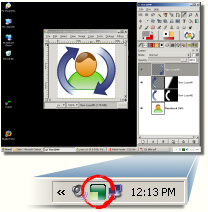Help! I changed Open with for exe
Someone right-clicked on an exe file and in the Open With option chose it to open with Internet Explorer. S/he probably left the check mark on "Always use the selected program to open this kind of file". All executables now started showing Internet Explorer's icon and started opening them with IE. If you are in a similar situation, here is what you can do to fix the problem: 1. Open the command prompt (Windows+r and type cmd) 2. Go to windows folder cd\windows 3. Open the Registry Editor using the following command regedit 4. Navigate to HKEY_CLASSES_ROOT\.exe and in right-hand-side pane, change value of Default key to exefile 5. Next, navigate to HKEY_CLASSES_ROOT\exefile\shell\open\command and in right-hand-side pane change value of Default key to "%1" %* 6. Restart your computer.
